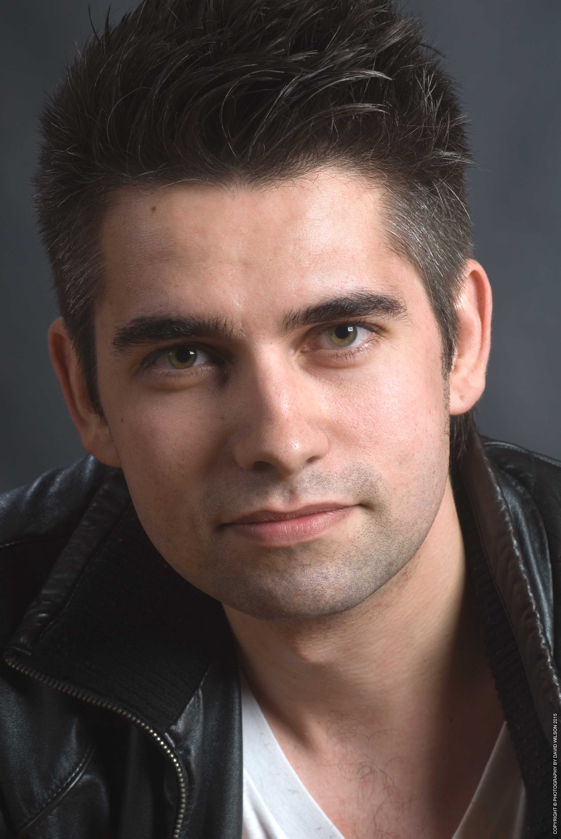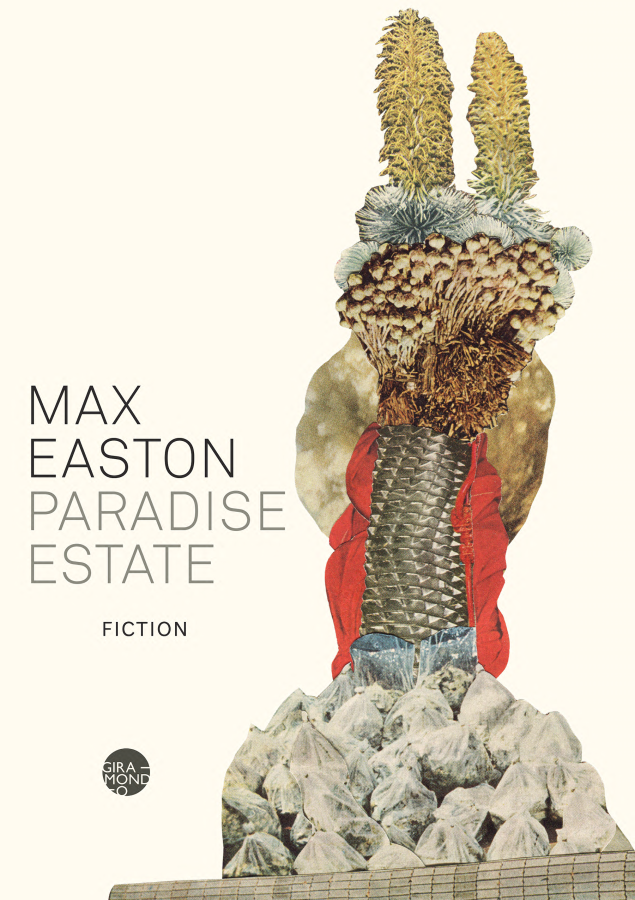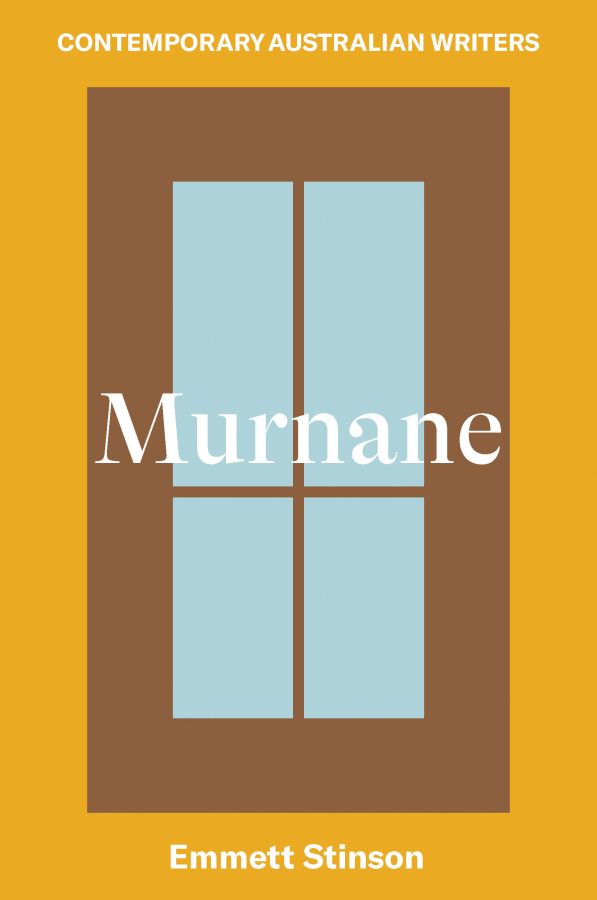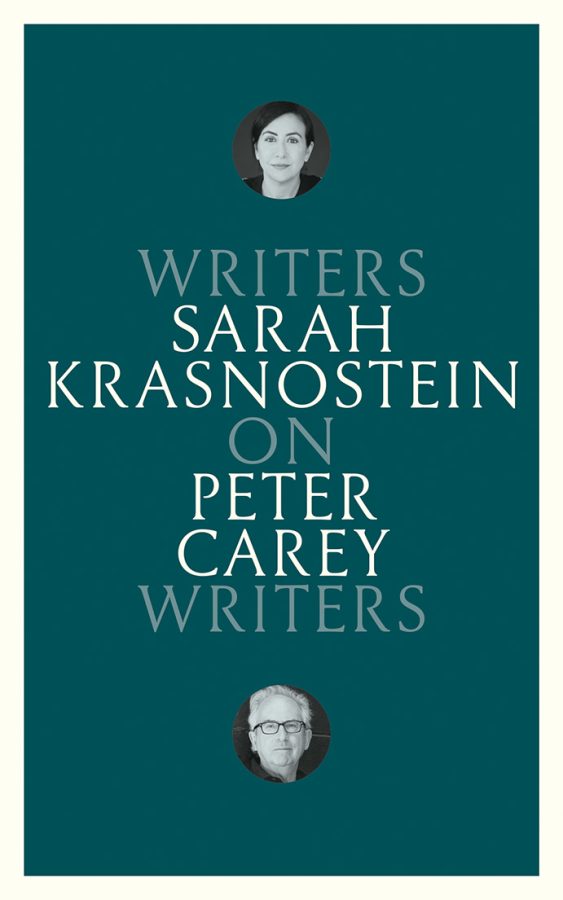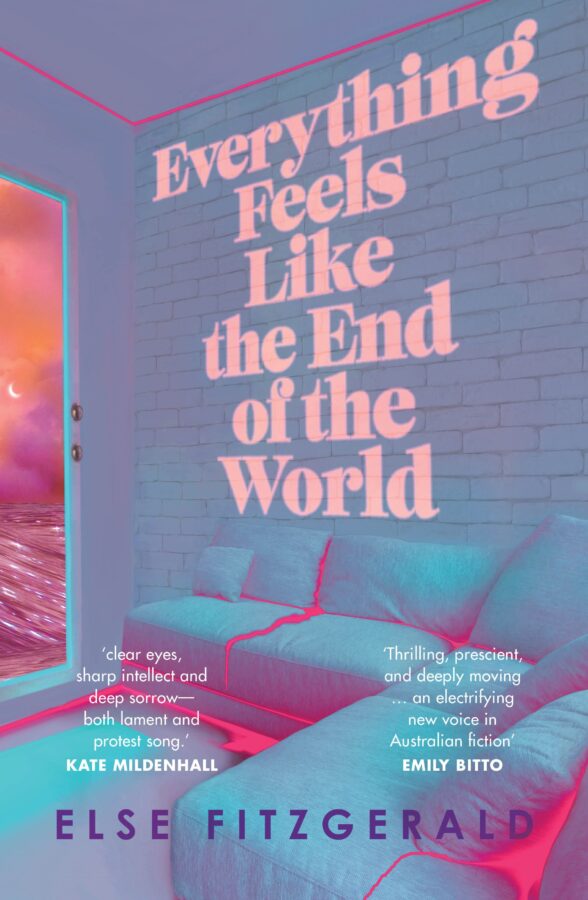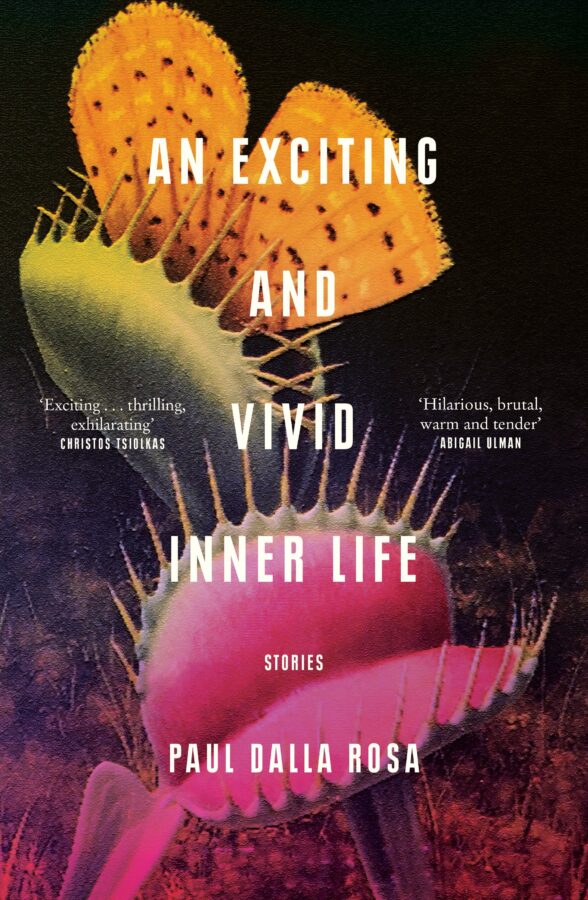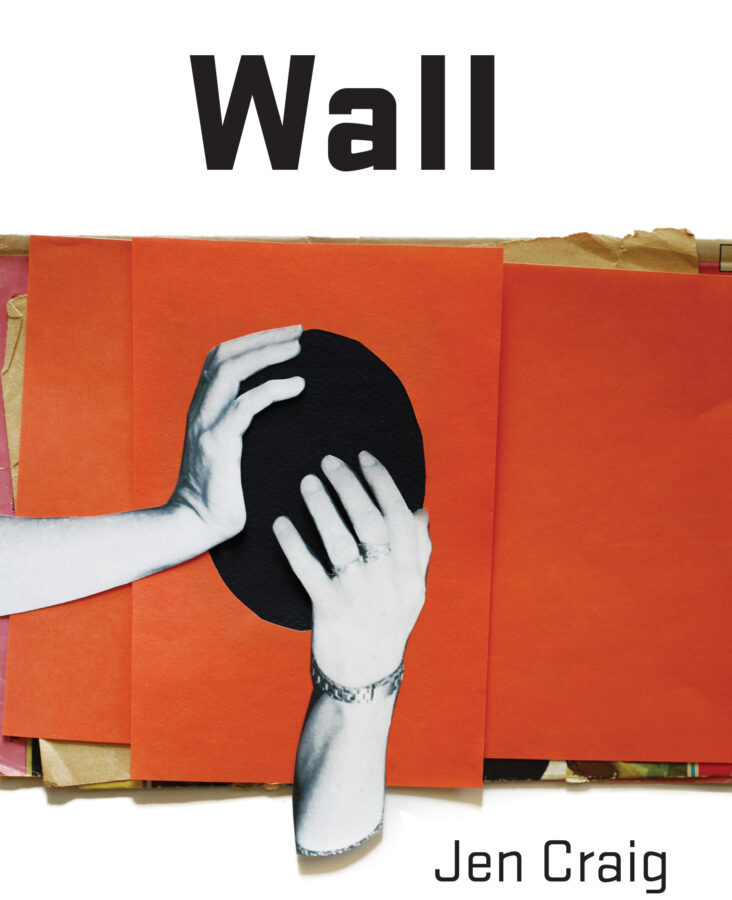Ben Brooker is a recipient of a 2016 SRB-CA Emerging Critics Fellowship. This is the second of three essays by Brooker that will appear on the Sydney Review of Books, alongside essays by other fellowship recipients, James Halford and Ali Jane Smith. Read all the essays here.
Finely balanced and spiced with well-placed expletives, Patricia Cornelius talks as she writes. The poetic/profane dynamic that surges through her short, grungy plays about the Australian underclass is audible in her voice too. There is frequently a note of anger, a sudden, unapologetic coarsening that reminds you that Cornelius, who is now in her early sixties, has lost none of the fire that forged her first plays at the Melbourne Workers Theatre in the late 1980s (her ‘apprenticeship’ as she calls it). If anything, by her own admission, Cornelius has been emboldened by age.
When I telephone her in Melbourne it has only been a couple of months since the infamous exchange at Carrillo and Ziyin Gantners’ dinner for 70 notable Australian playwrights at which Cornelius publicly upbraided Arts Minister Mitch Fifield for the Government’s cuts to the Australia Council. As Fifield left the stage following a platitudinous speech, Cornelius was reported to have risen to her feet like one of the Furies from Greek mythology to punish Fifield’s ‘false oaths’: ‘There is not a playwright in this room,’ Cornelius proclaimed, ‘that is not affected by the money that has been ransacked from the Australia Council. There is not a single artistic endeavour in the theatre industry that has not been impacted enormously by that ransacking. You want to honour us? You want to cherish us? Do not take the essential funds away from us!’ Remembering these words, I congratulate Cornelius and move the conversation on. She must be bored of talking about the dinner by now, I think, and eager – as eager, anyway, as someone who I’m told is not a fan of critical writing can be – to discuss her work.
There are few theatre artists in this country who make explicit political interventions. There are few David Hares, Harold Pinters or Ken Loachs in our history, writers or directors who risk putting their heads above the parapet to make, not always through their art, a political point. I think the reasons are more structural than individual – as much to do with our weirdly monopolised media landscape as anything else – but marriages of art and politics remain the subject of suspicion, including by artists themselves. There are two perceptions at work here, both epitomised in playwright Louis Nowra’s review of Hillary Glow’s Power Plays: Australian Theatre and the Public Agenda (2007): that political art is fatally didactic, and that critics are inclined to give it a free pass if its politics are of the right stripe. In fact, if all theatre conceived purely as entertainment has to do is ‘work’ in a dramaturgical sense (and god knows that’s hard enough), then it may be that political theatre is held to a far higher standard by the obligation it places on itself to also say something that is profound and exposing, and theoretically capable of bringing about change. That it must do this without, in David Hare’s memorable phrase, turning the stage into ‘a boring dissenters’ pulpit’ is the distinctive challenge political theatre sets for playwrights. It’s a view that echoes the late radical British playwright and director John McGrath’s belief that political theatre is no more exempt from the requirement to provide ‘a good night out’ than any other kind, that it must entertain even as it challenges one or another discourse of power.
‘No matter how grand your intentions,’ Cornelius tells me, ‘if you can’t back them with craft, you’re fucked’. The unfavorable critical reception of Hannie Rayson’s mainstage refugee play Two Brothers (2005) – and not just by conservative tabloid columnist Andrew Bolt, who tied his criticisms to a denunciation of state subsidies for the arts – is a case in point. Cornelius believes Rayson may have been ‘punished more because of who she is’ than for the play itself, but I’m not so sure. The premiere production, a collaboration between the Melbourne and Sydney state theatre companies, marked one of those rare moments in Australian theatre when a mainstage play with political themes enters the public debate. But its dichotomisation of the refugee issue – evil Liberal minister on one side, virtuous refugee advocate on the other – weakened the play’s force both as entertainment and political intervention in the eyes of many critics. In response, Rayson penned an article for The Age in which she argued: ‘I chose to write a political thriller – a form of entertainment that looks cruelty, ambition and injustice in the face’. Rayson was correct in at least one way: contrary to the critics who believed her a propagandist, Two Brothers was not old-fashioned agitprop – a ‘useful’ play with limited artistic ambitions – but an example of, as author and theatre-maker Ken Harper puts it, the literary play with its politics to the fore.
If literary awards are any guide, Cornelius is not fucked. Her play Love received the 2003 Wal Cherry Award, given annually for outstanding unproduced plays, and Do Not Go Gentle… won virtually everything it was eligible for between 2005 and 2011: the Patrick White Award, the NSW and Victorian Premiers’ Awards for Drama, the Ross Trust Award, two Australian Writers Guild awards, and the Louis Esson Prize. Yet none of Cornelius’ 25 or so plays has been produced as part of a mainstage season by any of Australia’s major performing arts companies. (Savages (2013) was commissioned by the Melbourne Theatre Company, though, typically, never produced there, and SHIT made it only as far as the company’s NEON Festival for Independent Theatre in 2015.) Why should this be? ‘There is a real anxiety,’ Cornelius told me, ‘about politics wherever there is a focus on subscription audiences’. This chimes with critic Alison Croggon’s assertion in a recent essay for The Monthly that ‘a new conservatism [is rising] on our main stages’. As with Croggon, Hillary Glow’s final verdict on the Two Brothers imbroglio draws in the wider cultural context of arts funding:
Whatever judgment might be made about either the aesthetic qualities or political efficacy of Rayson’s play, Bolt’s response to it sends a signal that the larger project of political theatre writing in Australia, funded by government patronage, might well be an endangered activity.
Rand T. Hazou’s book-length 2010 essay Staging Hidden Stories provides a sense of how much has changed in the decade or so since the premiere of Rayson’s play. ‘Between January 2002 and October 2005,’ Hazou notes, ‘the Australian theatre saw the staging of some 32 separate plays and performances that engaged directly with the plight of asylum seekers arriving on Australian shores’. These weren’t just fringe productions either; in addition to Two Brothers, there was, for example, Nigel Jamieson’s semi-verbatim In Our Name, which played upstairs at Belvoir Street and was, according to Hazou, widely regarded as the first play in a mainstream subscription season to deal with the issue of asylum seekers. The vexed relationship between politics, art, and the funding bodies – one that would reach its zenith with the Coalition government’s furious response to the 2014 Sydney Biennale boycott, and the subsequent changes to the Australia Council under Arts Minister George Brandis – was exemplified by the case of Ros Horin’s Through the Wire (2005), another documentary play based on interviews with asylum seekers. According to journalist David Marr, political interference led to the denial of funds for a proposed national tour. ‘Canberra,’ Marr wrote in an article for the Sydney Morning Herald, ‘was simply not going to back a politically unpalatable show’.
But does political unpalatableness entirely explain the marginalisation of Cornelius’ plays? A partial answer presents itself in the fate of Do Not Go Gentle…, which holds the distinction of being both Cornelius’ least explicitly political and most awarded to date. Although not a verse play, it nevertheless uses poetic techniques to weave together the events of Captain Scott’s doomed Antarctic expedition with the stories of seven residents of an old people’s home, shifting non-naturalistically between Scott’s actual diary entries – ‘Great God! This is an awful place’ – to the everyday goings-on of the home. As in the Dylan Thomas villanelle from which the play takes its name, the residents ‘burn and rave at close of day’; one, Bowers, has early-onset Alzheimer’s. The play’s striking visual imagery of the South Pole’s wastelands of snow and ice function as a metaphor of psychic obliteration – of memory, and of perceptions of space, time and self – as in Sundown Syndrome, the delirium that effects sufferers of dementia around twilight. But the play is not, or at least not only, about ageing and death. Equally, it is a warmly human and unsentimental essay on loss and its effects.
Despite winning the 2006 Patrick White Award, Do Not Go Gentle… had to wait four years for its premiere, slogging through three public readings while director Julian Meyrick ‘door-knocked a number of theatre companies, in Melbourne and in Sydney’. Finally, after overcoming a rejection for funding by the Australia Council in 2008, it opened at fortyfivedownstairs in Melbourne in August 2010. Asked by critic and arts journalist Andrew Fuhrmann why there had been such a delay between the play’s writing and its first production, Meyrick responded:
… Patricia’s work represents a compelling blend of realist and theatricalist (surrealist, expressionist) aesthetics. This is the front line of Australian stage playwriting today, the struggle to articulate the contours of a new public drama. It is unstable, imaginative, risky work and currently has no natural place in the mainstage repertoire, which is divided between traditional narrative drama on the one hand and cross art-form meta-theatricality on the other.
Is this, I wonder, the other sense in which, pace Alison Croggon, our mainstages are mired in conservatism – not just political but aesthetic too? If so, Cornelius is in a double bind, her work at once too formally inventive and too politically radical for the subscriber audiences assumed to favour realist, middle-class plays that use inherited forms and offer no critique of the wider social or political status quo. Cornelius, however, believes that it is the programming committees of the major companies – and, in the case of at least one of them if persistent rumours are true, a programming computer system – which are the real obstruction. ‘I’ve seen audiences engage with challenging work at the MTC,’ Cornelius says. ‘It’s a misguided view that they don’t. In my opinion, it is the companies themselves that are fearful of work that is critical of this country, of how mean we are, and that has a class analysis. The more they try to bury these things, the more I am interested in them’.
In SHIT, which had a brief season in MTC’s NEON Festival for Independent Theatre in 2015 and is – significantly – being revived for next year’s Sydney Festival, Cornelius provides the following character notes to actors:
There’s not a single moment when the three young women transcend their ugliness.
There’s no indication of a better or in fact any inner life.
They don’t believe in anything.
They’re mean, down mouthed, down trodden, hard bit, utterly damaged women.
They’re neither salt of the earth nor sexy.
They love no one and no one loves them.
They believe the world is shit, that their lives are shit, that they are shit.
The three young women are Bobby, Sam and Billy (note the androgynous names). When the play starts they have badly beaten another woman who, notwithstanding that she is demonstrably more privileged than they are, just happened to be in the wrong place at the wrong time. But the play, as it intertwines two narratives – one set in an anonymous room, perhaps a holding cell, the other built around of a series of images taking place in a different space-time – doesn’t allow for straightforward readings along lines of class or social disadvantage. Everything about these women is ambiguous, down to the fact that one of them, Bobby, even claims to despise women: ‘Always wanting to be looked at,’ she says, ‘to be seen, talking too loud, talking obscene, talking like they love it up the arse, sucking cock, drinking cum, their tits being bit. Like they like it with that one and then that one, queue up, bring it on. Talking shit. They are shit.’ Cornelius refuses to psychologise such outbursts – there’s little suggestion that this is simply internalised misogyny, an inversion of the gendered abuse all three women have been on the receiving end of. Such paradoxes cannot easily be explained away, and nor can these women. Both the victims and perpetrators of ‘horrendous’ acts, they are monstrous but not monsters, and not entirely without agency, even if their social world is one of hellish privation. The three women are also an expression of what Cornelius described to me as her desire to make audiences form relationships with unlikeable people. Normally seen as a barrier to engagement and understanding, here this contemptibility functions as a mirror of what Cornelius believes is a hatred for the underclass that runs deep in Australia. By Bertolt Brecht’s definition of political theatre as that which illuminates a situation so we can usefully reflect on our own place in it, SHIT is political theatre par excellence. It is also riveting, even strangely exhilarating. The play opens with an intense yet hilarious exchange in which Bobby and Sam take Billy to task for her overuse of coarse language (‘I’ve never,’ wrote John Bailey in his review of the NEON Festival production, ‘heard “fuck” used as noun, verb and adjective in the same sentence’). ‘Listen to you!’ says Bobby. ‘How many fucks you stuffed in that sentence?’ After four pages of this, Bobby finally concedes with a kind of awe: ‘The life in them words’. In response, Billy sighs: ‘Electrifying’. And so they are.
‘If you want to understand where Australian theatre is headed,’ Julian Meyrick told Andrew Fuhrmann, ‘you’ve got to understand where it’s been. The past is the key to the future’. It’s possible to see the history of political theatre in Australia as a series of self-contained waves, each marking a national ‘turn towards the political’ by a group of playwrights that, for a moment, are able to transform the country’s stages into places where ideas are contested and structures of power examined.
Thus imagined, the story usually begins with the amateur Pioneer Players, a company founded by playwrights Louis Esson and Vance Palmer – and, crucially, Esson’s wife, Hilda – in 1922 as a vehicle for their nationalistic folk drama.
Against the grain of the time, Esson and Palmer foregrounded rural and working class themes in their plays, taking for their subjects the harsh conditions of life in the country, and the grimness of the industrialised inner city. While these plays, often comic in tone, weren’t always political in an overt or didactic sense – though Esson’s socialism is indivisible from plays like the Shavian comedy The Time Is Not Yet Ripe – they nevertheless attested to a politics of place, a conscious attempt to reproduce the national mission of Esson’s great model, the Abbey Theatre of W.B. Yeats in Dublin. J.M. Synge, one of the Abbey’s key writers, famously exhorted Esson to look to his own country for material, specifically ‘all those outback stations with shepherds going mad in lonely huts.’
Characteristically of our theatre, The Players were short-lived but influential. The company’s spirit flowed substantially into the more obviously radical, though still national-minded, drama of the New Theatre movement that began in the 1930s and remained strong, and nationally organised, until the end of the 1960s. Based on the Soviet agitprop-inspired workers’ theatres of Britain and the United States, New Theatres were founded in Sydney (1932), Melbourne (1935), Brisbane (1936), Perth (1936), Adelaide (1937), and Newcastle (1957), presenting varied programs of plays that, according to theatre historian and academic Angela O’Brien, ‘were often unashamedly didactic, and concerned with the fight against war and fascism, labour problems, support for the Spanish republic, advocacy of the Soviet way of life and satirical attacks on capitalism.’
In addition to repeated productions of socialist warhorses like Waiting for Lefty and The Ragged-Trousered Philanthropists, Australia’s New Theatres were driven by the work of a remarkable group of local female playwrights and cultural leaders. Hilda Esson, disillusioned with the Pioneer Players’ inability to supply the ‘revolutionary art’ that interested her, was a key figure in Melbourne’s New Theatre scene, as Katherine Susannah Prichard was in Perth’s. Plays by Betty Roland, Dymphna Cusack, Oriel Gray, and Mona Brand – often communist, informed in some cases by their authors’ visits to the Soviet Union, and many dealing with social issues like Aboriginal disadvantage for the first time – were central to the New’s repertoire at a time when professional theatre, dominated by drawing-room comedies and vaudeville, was hostile to so-called ‘purposeful’ drama. Many of these playwrights, Gray and Brand among them, rarely saw professional productions of their plays, even when they won awards, doubly illegitimated by their radical politics and gender. They must have been in two minds about the New Theatre movement’s biggest conventional success, the folk musical Reedy River. Written by a man, Dick Diamond, it was seen by hundreds of thousands of people, dominating not only the repertoire for much of the 1950s but also underwriting, through its considerable box office takings, many other New Theatre productions.
By the late 1960s and early 70s, communist utopianism had been thoroughly discredited, and the onset of the Cold War had seen many of the New Theatres close, and the national organisation break up. Animated, on the hand, by opposition to the Anglophile theatre of their immediate precursors and, on the other, the profound social and political unrest of the times, the New Wave emerged. Consisting of a group of young, mostly male playwrights clustered around Nimrod in Sydney and the Australian Performance Group (APG) in Melbourne, the New Wave – though multifarious in its ideas and practices – sought to both renew, in the form of their famous ‘larrikinism’, the popular, national-minded traditions of previous generations, and at the same time align itself with the growing counter-culture that was pushing back against the existing social and political order. However, as critic John McCallum noted in 2009 in Belonging: Australian Playwriting in the 20th Century:
Many of them were left-wing, but aside from a brief surge of agitprop to protest the Vietnam War, and the work of John Romeril, they tended not to engage seriously with politics. For the most part they seemed untroubled by too much understanding of the identity politics that became driving forces in the late 1970s and 1980s.
Despite the energies unleashed by the Whitlam government’s doubling of the arts budget in 1973, by the end of the decade Nimrod and the APG were on the brink of collapse. So too was the most political of their offshoots, Brisbane’s Popular Theatre Troupe, which foreshadowed much of the political theatre of the 1980s, such as that of the Melbourne Workers Theatre, by performing shows in non-theatre venues. The Community Theatre movement that followed in the wake of these companies reclaimed both New Theatre and New Wave strategies, employing agitprop and street theatre devices to highlight the struggles of marginalised communities. Though identitarian categories – feminist, lesbian and gay, and so on – would come to both dominate and, at a political level, fragment the movement, it nevertheless drew on the earlier socialist theatre of radical British directors such as Joan Littlewood and John McGrath. Its cultural context, unlike that of the New Wave, was one of attenuation: a reigning in of subsidy, and a climate of aggression towards trade unionism. Despite weathering such storms for 25 years – in the process, fostering playwrights such as Andrew Bovell and Patricia Cornelius, and producing landmark plays like Who’s Afraid of the Working Class? – the Melbourne Workers Theatre closed in 2012. The loss of Australia Council funding in 2008, and support from both Arts Victoria and the City of Melbourne thereafter, made the company untenable.
While Patricia Cornelius bemoans Jeff Kennett’s arts cuts, she is philosophical about the demise of the Melbourne Workers Theatre. ‘It was time,’ she says. ‘It had outlived a lot of companies. My worry is, what didn’t replace it?’ In the years since the MWT’s founding in 1987 – and especially since its closure – political theatre in Australia has become ever harder to locate, and never more resistant to attempts to draw its aesthetic and practical dissimilarities together under any single rubric. In addition to plays like Katharine Thomson’s Diving for Pearls (1991), which subtly parsed topical issues such as globalisation and the decline of industry, the 1990s saw the emergence of yet more forms of identity-based theatre, especially in the remarkable flowering of Indigenous theatre that, while generally not explicitly political, nevertheless defined itself in terms oppositional to hegemonic understandings of Australian history and society. While the popular musical Bran Nue Dae (1990) marked a turning point in the visibility of such work, it was biographical and autobiographical forms – often the one-person show – that defined Indigenous theatre’s 1990s resurgence, spearheaded by playwrights like David Page, Leah Purcell, Deborah Cheetham, and Ningali Lawford (the last three combining to create Wimmin’s Business (1997), a program of solo performances by Indigenous women).
If the 1990s represented a defining moment for Indigenous work – and one in which the second-wave feminist slogan ‘the personal is political’, long co-opted by any number of interest groups, returned with renewed force – then the decade 2000–2010 will most likely be remembered for two movements, both offering critiques of systems of power, but energised by vastly different political and aesthetic practices. On the one hand, there was the aforementioned body of largely realist work addressing asylum seeker policy under the Howard government, and, on the other, the rise of queer theatre, as exemplified by the Melbourne-based company Sisters Grimm, a collaboration between performer Ash Flanders and playwright Declan Greene formed in 2004. In a recent interview with The Australian’s Emily Ritchie, Flanders spoke insightfully about the contrast between these two modes:
Flanders and Greene met in the early 2000s when mainstream theatre was deeply rooted in weighty social issues, including the Howard-era refugee crisis. ‘Theatre was very trapped in naturalism at the time,’ says Flanders. ‘It was a kind of polemic theatre about social issues and people being educated to think the right thoughts.’ The pair of self-professed “theatre nerds” understood the need for serious theatre but wondered why no one was showing how fun and vibrant it could be.
In other words, John McGrath’s ‘good night out’ for a new generation unfazed by formally non-traditional work that, as Alison Croggon put it in a review of 2013’s Summertime in the Garden of Eden, ‘is underpinned by a deftly intelligent subtext that skewers the binary world of white heteronormativity’. And just as plays like Two Brothers brought an issue that was being hotly contested by the public into the rarefied world of the major performing arts companies, so Sisters Grimm has succeeded in ‘mainstreaming’ their queer vision with shows programmed by the state theatre companies of both Sydney (Calpurnia Descending, 2014) and Melbourne (Lilith: The Jungle Girl, 2016). One need only look at the 2017 season of another subsidised theatre, Melbourne’s Malthouse, for a sample of the trail Sisters Grimm has blazed. Dubbed ‘an anarchic season of theatre that revolts against the establishment and searches for radical compassion’, queer politics are pervasive, including in the Declan Greene-penned The Homosexuals, or Faggots.
What does Patricia Cornelius make of all this? Contemporary queer theatre would seem to fit at least one definition of political art offered by Cornelius: that it must ‘seductively and powerfully engage with what is current’. But there is, too, a note of resistance in Cornelius’ claim that much of this work – ‘sexy with high camp humour’ – displays an aversion to ‘tough, serious work’. It’s not a charge that, for me, sticks in the case of Sisters Grimm – the company’s work, steeped in rigorous analyses of gender, race, and colonialism, is notable for being at once serious-minded and frothily entertaining. While it may be regretted that, even as the refugee policies of successive Australian governments have hardened since the Howard years, asylum seekers have vanished from our mainstages, I can’t imagine that anyone would wish for a return of the earnest polemicising of those plays over the subversive, seductive experimentations of theme and form that characterise the best of today’s queer theatre. It remains to be seen what its embrace by mainstage companies will mean for its political efficacy, whether it signals a neutering ‘selling out’, another victory for identitarian politics, or something else.
As I near the end of my telephone call with Cornelius, a weariness creeps into her voice. ‘I’m very tired,’ she says, suddenly sounding far away, ‘we’ve been speaking for a long time’. This rapid fade comes as a shock, such is the vitality Cornelius has exuded over the past hour or so. At the last moment she rallies again, picking up where we left off moments before: ‘I don’t care what it’s about,’ she says, as though admonishing herself for her previous comments. ‘Do it rigorously’.
The SRB-CA Emerging Critics Fellowships are supported by the Copyright Agency’s Cultural Fund.

